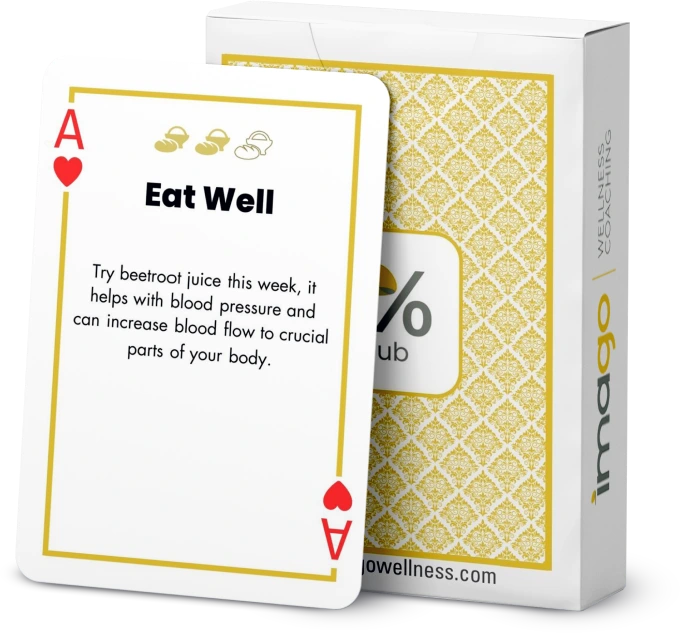The 1% Club




Jack of Hearts
Action: Taste Test
Blindfold tasting
is when you eat foods like fruits and vegetables without using your eyes – use only the thousands of little taste buds on your tongues to recognise the flavours and textures of foods and your nose to recognise the smell.
- Grab a friend and a something (e.g. scarf) to make a blindfold.
- Ask a parent or an adult to help with cutting the foods up.
- Think about the different smells and tastes of the food.
Blind food tasting fruit and vegetables encourages you to use different senses of smell, taste and texture rather than relying on what your eyes see.
By tasting fruits and vegetables without seeing them, you get to experience flavours in a totally new way.
This game is all about discovering surprising tastes, challenging your senses, and maybe even finding a new favourite food.
Plus, it’s a playful way to bond with a friend while exploring healthy snacks!
Studies have shown that blind food tasting can:
- Encourage using different senses.1
- Reduce the fear of new foods.2
- Improve attitudes towards fruits and vegetables.3
- Boost confidence and independence in food choices.4
- Enhance food literacy and awareness.5
Small changes CAN make a big difference – that’s what The 1% Kids’ Club is all about.
Check out the references below to explore blind food tasting in more detail!
- Encourage your students to do some blind taste testing with friends, or even try it in class!
- Create a fun and non-judgemental environment, emphasising there are no “right” or “wrong” answers.
- Use blind tasting as an opportunity to discusss the nutritional benefits of fruits and vegetables, linking food to health in an age-appropriate way.
- Help set up the blind tasting area and cutting up the foods or even making them into puree-like textures.
- Make it a fun game where your child can be a “food explorer” or “taste detective”.
- Get kids involved with picking, washing or even preparing the fruits and vegetables they’ll taste, allowing them ownership and making them more excited to try it.
- Randomly ask your child to close their eyes and give them a piece of food and ask them to guess what is, identifying the flavours, textures and smells without using their eyes.
- Birch, L. L., & Fisher, J. O. (1998). Development of eating behaviors among children and adolescents. Pediatrics, 101 (Supplement 2), 539-549.
- Correlates of picky eating and food neophobia in young children: a systematic review and meta-analysis. Natasha Chong Cole, Ruopeng An, Soo-Yeun Lee, Sharon M Donovan. Nutrition Reviews, Volume 75, Issue 7, July 2017, p516–532.
- Cooke, L. J. (2007). The importance of exposure for healthy eating in childhood: A review. Journal of Human Nutrition and Dietetics, 20(4), 294-301.
- Dazeley, P., & Houston-Price, C. (2015). Exposure to foods’ non-taste sensory properties. A nursery intervention to increase children’s willingness to try fruit and vegetables. Appetite, 84, 1-6.
- Wansink, B., Just, D. R., & Payne, C. R. (2009). Mindless eating and healthy heuristics for the irrational. American Economic Review, 99(2), 165-169.

